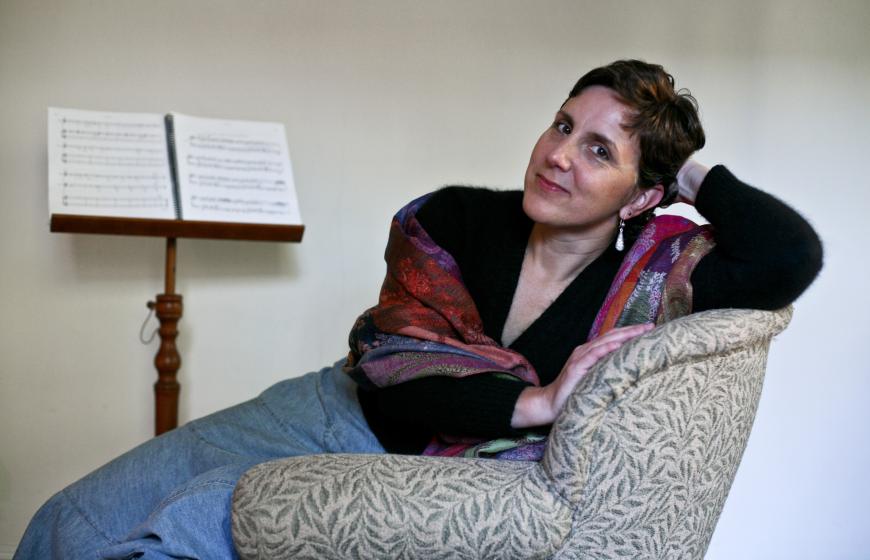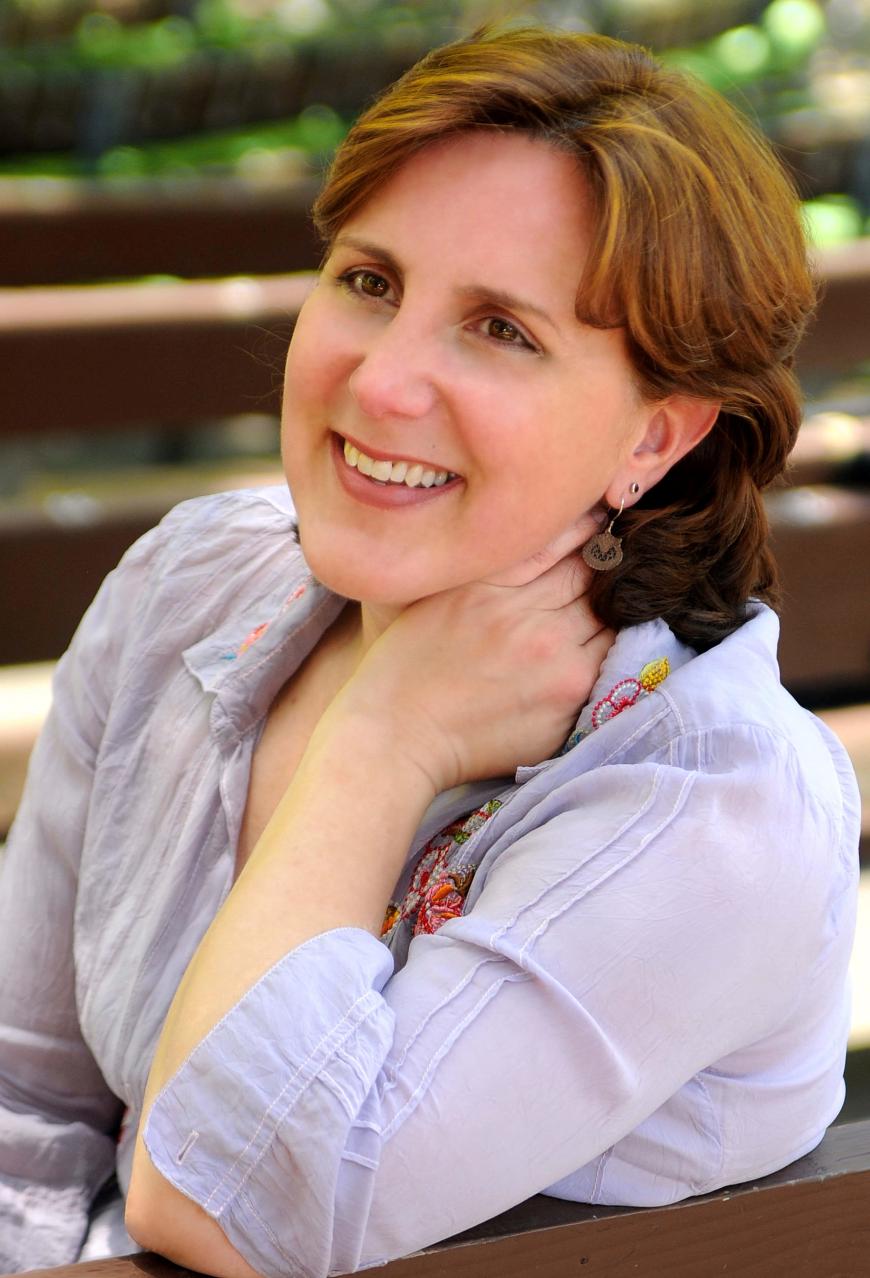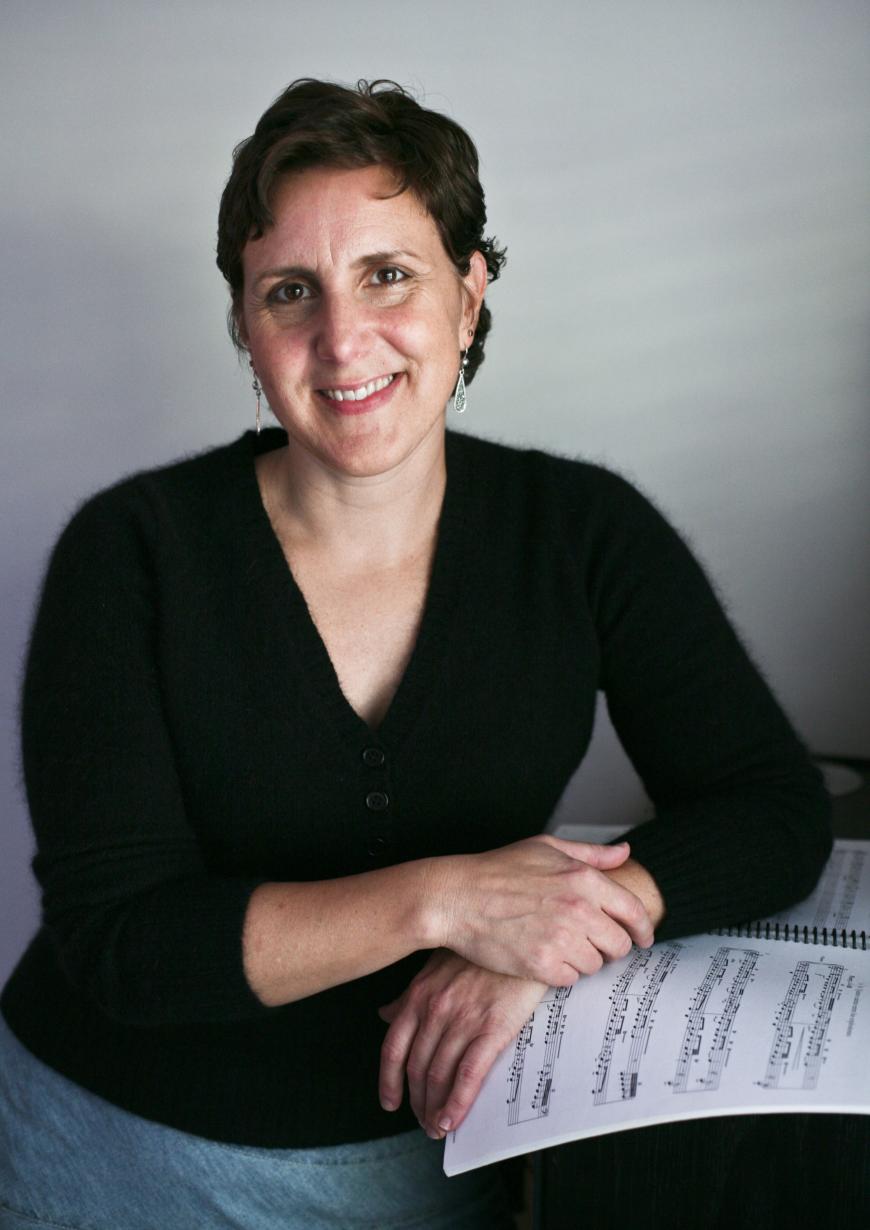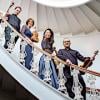
It’s not every soprano who can lay claim to having sung with the Metropolitan Opera nearly 300 times in a span of 19 years. But then again, there’s no other musician quite like Dawn Upshaw. Between embodying the great Mozart roles — from Susanna, Ilia, and Pamina to Despina and Zerlina — and premiering new operas — including John Harbison’s The Great Gatsby and Kaija Saariaho’s Grawemeyer Award-winning L’Amour de loin — Upshaw has had a decidedly storied career.
And that career continues with a new performance project, “Dido Reimagined.” In collaboration with the Brentano String Quartet, the program, which debuted last year, will have its West Coast premiere Jan. 12 at Herbst Theatre, presented by San Francisco Performances. With a score by Pulitzer Prize winner Melinda Wagner and a libretto by Stephanie Fleischmann, this “Dido” has indeed been reimagined as a monodrama that is simultaneously a journey and a meditation.
On a bill that also features early English works by Matthew Locke, John Dowland, and others — leading to the exquisite “Dido’s Lament” from Henry Purcell’s 17th-century opera Dido and Aeneas — this shapeshifting character does not choose death but decides instead to remove herself from the everyday world by opting for solitude.

That’s not exactly a description of Upshaw herself, who survived a bout of early-stage breast cancer in 2006, but the path from the operatic canon to championing contemporary works nevertheless suits the soprano well.
Born in Nashville, Tenn., in 1962, she earned a B.A. from Illinois Wesleyan University in 1982 and a Master of Music from the Manhattan School of Music two years later. A five-time Grammy Award winner and the first vocal artist to be awarded the MacArthur Foundation’s “genius” prize, Upshaw continues to enthrall audiences with a bespoke repertory, with The New York Times’ Anthony Tommasini once describing her voice as having “astonishing nuance and ritualistic power.”
And her discography of more than 50 recordings is equally impressive, with Upshaw and Polish composer Henryk Górecki, who died in 2010, both shooting to international fame in 1992 with the release of the composer’s Symphony No. 3. Also known as the “Symphony of Sorrowful Songs,” the Nonesuch recording that featured David Zinman leading the London Sinfonietta sold more than a million copies. Set to three laments about motherhood — all sung in Polish — the score was a mystical voyage from light into darkness and back again.
Upshaw, a distinct force in new music, has premiered more than 25 works in the past decade and is a favored partner of many leading musicians, including Kronos Quartet and Esa-Pekka Salonen. Having founded the Vocal Arts Program at the Bard College Conservatory of Music (she left in the spring of 2019), Upshaw continues to inspire young singers heading the Vocal Arts Program at the Tanglewood Music Center.
SF Classical Voice recently spoke with Upshaw by phone from her home in Connecticut, where she lives with her wife and their four children. The conversation touched on topics ranging from the Górecki recording and “Dido Reimagined” to the notion of returning to the operatic stage.

For me — and I probably speak for many — hearing the Górecki album proved an emotional experience that still resonates today. What are your memories of recording the work, and how did its phenomenal success impact your career?
I have wonderful memories of the recording and the session with Mr. Górecki the day before. At that time, he could barely speak any English, but I knew the Polish text. I could feel the incredible connection and power of his experience through working with him and having him at the piano. He sort of moaned through the piece, [and] it really took me to a new place.
Then, with all of us in the studio, it was a very intense physical and emotional experience to actually perform it. It’s kind of so huge, in a sense, that it’s hard to get your mind around. It’s a real journey, and just working on it and performing it can be emotionally exhausting. We really had no idea it would end up such a huge hit because there had never really been a contemporary classical music recording with that kind of impact.
That was a shock and a wonderful surprise. I was very pleased for Mr. Górecki, [though] it was very overwhelming for him at the time, the success of it. In any case, it was a powerful experience all around. How did it affect my work in the future? It’s hard for me to say because it’s difficult for me to have any objectivity.
Flash forward three decades and you’re now performing “Dido Reimagined.” What was the genesis of the piece, and had you worked with Melinda Wagner or Stephanie Fleischmann before?
It was [violinist] Mark Steinberg of the Brentano Quartet who had come up with this idea, which I love so much — having a first half of the program that’s early music and to include “Dido’s Lament” and then have a new piece for us. We’ve been working together for several years, and I’m excited about the idea of this.

None of us had worked with Melinda or Stephanie before, and they hadn’t worked together either. It was Mark’s idea to ask Melinda to write something to Dido and with the idea of maybe thinking about the story of Dido through Purcell’s Dido and Aeneas. There’s a lot of history and myths and different story lines, and of course, he wanted both of them to really go in whatever direction they wanted to go.
You’ve said that having the poet/librettist around — in this case Stephanie — is a gift. How so?
It’s always good to get more information when you’re trying to say something. You want to say something true and honest, [so] the more information you have, the better. Also, in understanding the origins of the text and the dramatic sense — to understand the timeline, etc. — it’s always a gift to be able to ask a librettist or poet or composer, to be better informed.
In the program notes, your collaborators write that the work is a reflection on the power of love, on the passage of time, on loss, resilience, and the restorative power of a disappearing world. How would you characterize this Dido as opposed to Purcell’s Dido?
This Dido chooses life. She’s a very strong woman, and she really makes a decision — instead of putting herself on the funeral pyre — to seek solitude and a kind of reconnection to nature. It’s very hard in this world to get away from all of our machines and expectations in our relationships; it’s essentially impossible for most people.
It would take money even for a lot of people to go and seek solitude for an extended period of time. It’s always kind of, I think, surreal to really try to imagine what that must be like. But it’s great to have the help of a very descriptive text.
Countless folks consider the Purcell aria, “Dido’s Lament,” to possibly be the saddest song in the world. Where do you rank it?
It’s very, very powerful. I am always moved by the grace of it in that she’s still hoping that what she’s about to do is not going to hurt anyone. She [also] hopes that she will be remembered, but not for all of the pain, and hopes she doesn’t cause pain to others.
It’s interesting, [and] I don’t know why so many people are drawn to that aria. I think there have been times when a few people in the audience have come up to me afterward, [and] they have just lost someone close to them, [and] the music in combination with that text is very powerful. It has for a long time now reached deep into the soul for a lot of people who can relate to the loss and the pain.
Do you ever miss performing opera, and would you consider returning to the art form?
Do I miss it? I don’t miss the travel and being away for an extended period of time. I had some wonderful, wonderful experiences, but I don’t miss that aspect at all. I really slowed down a lot, not just in opera but, happily, with all of my performing. I’m 62. I went at such a speed in the number of performances and [amount of] travel, I tired of that aspect. But I would go back with the right project. Since I just signed a contract, I am going back to the Met in 2026. I’m doing Kaija Saariaho’s Innocence, which has been done in Europe.

Your fans will be thrilled to hear that, which brings me to the notion of what composers, musicians, or conductors you’d like to work with in future that you haven’t yet.
I’m not really thinking like that. I’m trying to have things kind of organically come to me. I certainly will enjoy doing new projects that I haven’t done before in the future, but there’s nothing now that I’m working to create. I’m kind of enjoying slowing down.
I also enjoy working with young people and teaching. I’m head of the program at Tanglewood, and we just finished auditions for this coming summer. That is really important and fulfilling work for me, and I look forward to it. I’m involved throughout the year with putting programs together, working with my colleagues to try to create as powerful as possible a summer for each of these young singers. That also takes up a lot of space in my head and in my heart. It takes time as well.
What advice do you give these young singers?
My hope is that they will get to know themselves as artists, get to know their artistic selves better through the summer that they have with us. It’s become more important than ever for performers to have a really good sense of why they’re performing. What is it that they want to say with their music-making? How is it they want to affect the world around them?
It cannot be about singing the same music in the same way and about beautiful voices. It just has to be about much more, the drive to do this for a living. It’s not easy. You’re putting yourself out there in a very exposed, scary way sometimes. But the better you know yourself, the better your work will be.



